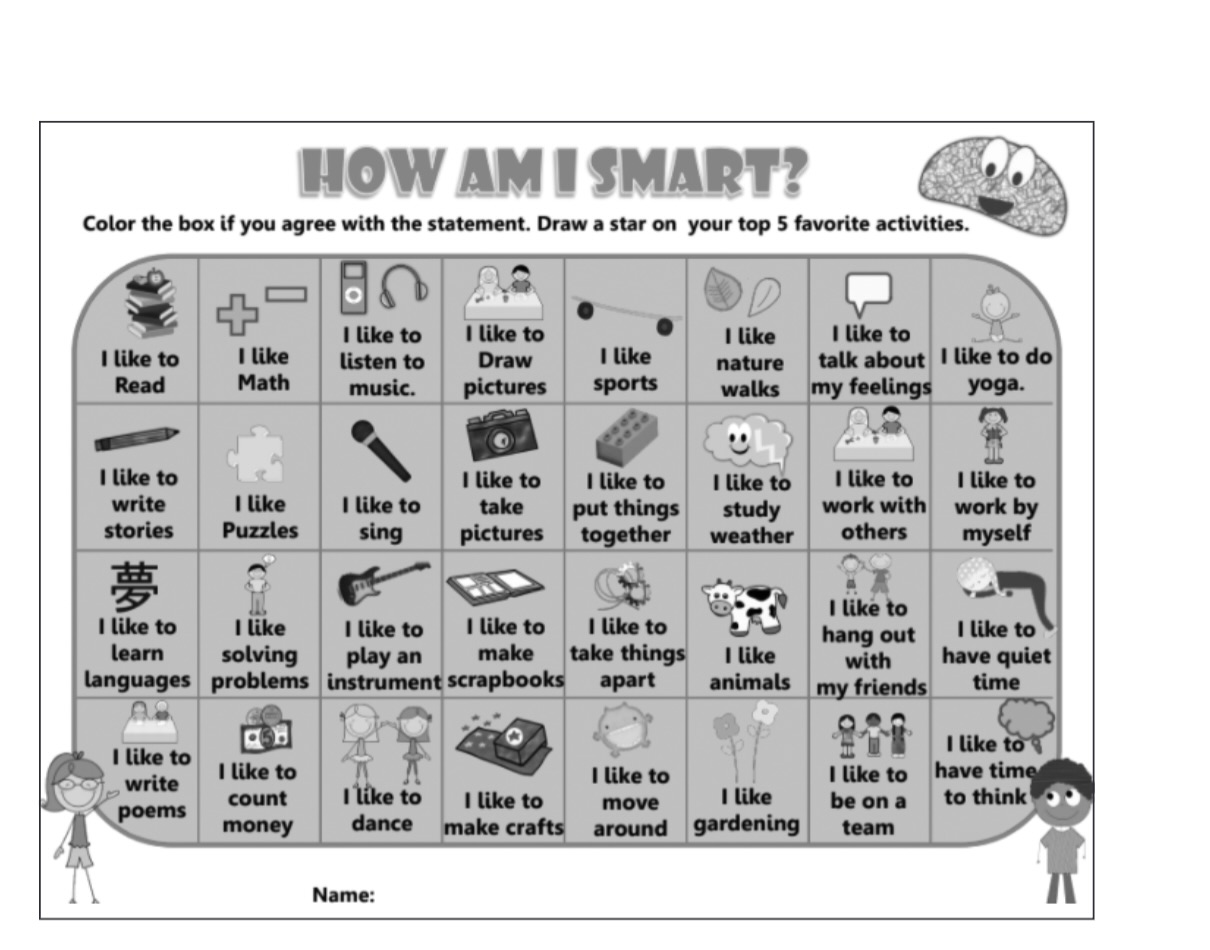I began reading the book “Adventures in Authentic Learning” by Kristen Harrington. Pages 10-13 she discusses setting a foundation for project success. She emphasizes the importance of creating a supportive and inclusive classroom environment for successful project-based learning. It suggests incorporating culturally responsive teaching, such as diverse literature and guest speakers. The text also highlights the significance of class and team building through activities like multiple intelligences surveys and using scripts to teach social skills, fostering a positive environment which is good for collaborative projects.
Multiple Intelligence Surveys
Harrington discusses the use of Multiple Intelligences Surveys, inspired by Howard Gardner’s framework, called the “How Are We Smart?,” which is shown below. She emphasizes the surveys’ value in helping students understand themselves and appreciate diverse preferences. The surveys aim to facilitate lessons tailored to meet the needs of all learners by acknowledging various intelligences. Harrington suggests creating online forms using platforms like Google Forms or Microsoft Forms for easy response collection, especially in virtual classrooms. The use of graphics in these forms makes them accessible and simple for even the youngest learners to complete.

Using Scripts in the Classroom
The example of using scripts in a STEM engineering project with first-grade classes illustrates how scripts can benefit younger students and those with limited social skills by promoting turn-taking, focused discussions, and improved project outcomes.
Here is a link to some sample scripts I found helpful when trying to understand what they would look like or consist of.
Overall
The passage provides comprehensive insights and practical strategies for creating a conducive learning environment for successful project-based education.